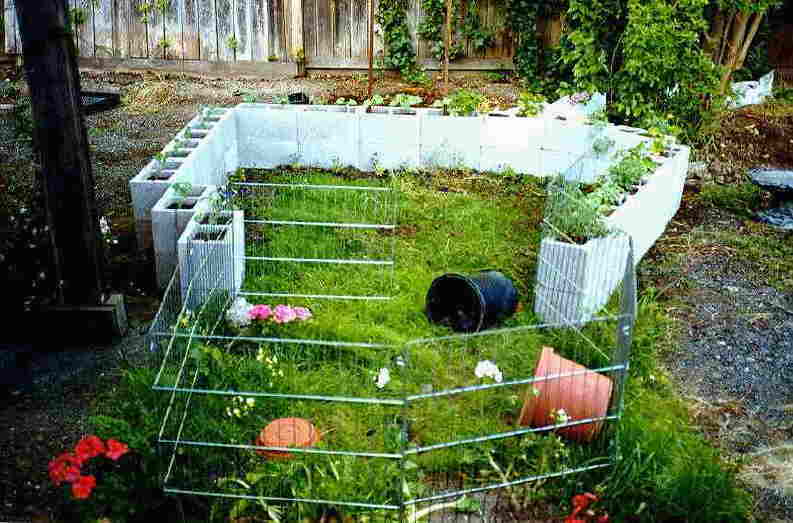|
|
Melissa Kaplan's |
||
Tortoise Foraging Mix
©1997 Melissa Kaplan
|
|||
|
Annie Lancaster, a tortoise and turtle rehabilitator, started the ball rolling with her foraging mix, about which you can find information at her site, Desert Native Nursery. Dryland and wetland pasture mixes are standard foraging and cover crop mixes sold by agricultural supply houses, feed stores, etc., and may be ordered through them if they do not carry it. Some will only stock them at certain times of year...which may not be when you want to plant the stuff...so do ask them if they will order it in for you outside of their usual stocking period. If you can't wait to order your mix online from Desert Native Nursery, or you can't find all the seeds you need locally, you can ask your local feed and grain store if they will have it formulated for you by their seed supplier. A friend of mine did and was nicely accommodated by her feed and grain store.
I scattered 4 pounds of seed thickly on the ground inside and outside my little tortoise pen during a gentle rain in March. I didn't do any ground preparation, other than what the tortoises had churned up the few days they'd been able to go outside during the fall. I didn't need to do any watering, as we had some rain almost every day. The rain also seemed to keep most of the birds away; those who did come ate some of the seeds that I spread outside the pen; for some reason, they didn't go inside the pen. By the time we had our first day warm enough to put the tortoises outside for a couple of hours, the grasses were growing quite nicely. My large desert tortoise promptly mowed a patch before he remembered that there were also geraniums, violets and chard to munch on. My "baby" desert tortoise was a bit shell shocked: this was the first time she was big enough to be placed in the pen without being inside another container to prevent her from just cruisin' through the bars of the pen. The upshot is that they love it and I feel a lot better being able to provide foods that aren't grocery store produce with high water content. When I expanded the pen over what had been hard, rocky ground, I tossed down some soil from the nursery, seeded and watered it, and it has been reseeding and growing ever since. Almost two years after this photo was taken, the metal part of the pen is now thickly covered with grape, geranium, chard, and clovers, while nasturtium, herbs and more geraniums have been planted and are growing from the cinder blocks. Nasturtiums being what they are, they are starting to spread into the pen, as well, where there are still some pansies remaining from last year. Any snails I find go to feed my leaf and box turtles |
|||
www.anapsid.org/resources/forage.html
Need to update a veterinary or herp society/rescue listing?
Can't find a vet on my site? Check out these
other sites.
|
|
||||
© 1994-2014 Melissa Kaplan or as otherwise noted by other authors of articles on this site

